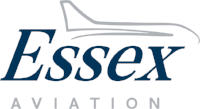
NAFA member, Essex Aviation Group, discusses how to simplify aircraft lease return.
As the global finance industry evolves, more and more banks are turning to corporate aircraft leasing to create new financial opportunities and expand profit margins.
The concept is simple enough: Similar to a leasing a car, a bank owns the aircraft and leases it for a predetermined period of time (typically anywhere from 5 to 15 years). During lease agreement negotiations, the parties define the various lease terms — specifically, the length of the lease and terms regarding the intended use and operation of the aircraft. One of the most important matters that the lease should cover is within the return conditions expected of the aircraft and the definition of any maintenance activities or inspections that the lessee needs to complete prior to returning the aircraft. The lease should also define the aircraft specifications, loose equipment and any additional items that were with the aircraft at the time the lease began and must be returned to the lessor.
Overseeing a Lease Return
If you are a lender or the asset manager of an organization that is in the business of leasing aircraft, consider working with a qualified aviation advisor to manage the asset’s return requirements and ensure that the aircraft meets the terms and conditions as defined in the lease agreement.
In doing so, your advisor will carefully review the lease agreement and evaluate the asset against the terms of the agreement. Evaluation is typically a four-part process, during which the advisor should do the following:
- Re-review the aircraft records for continuity and completeness (gaps or missing records will affect the value of the asset).
- Ensure that the aircraft conforms to how it was originally certified or has subsequently been modified.
- Review any damage history, out of sequence maintenance activities or major repairs.
- Assist the lessor in the lease return inspection discussions with the lessee.
Even a minor issue with the asset — say, for example, a malfunctioning galley appliance — being necessary to function and as part of the aircraft’s certification can cost your organization thousands of dollars to repair or replace if this item is not identified during the lease return inspection. It is your advisor’s job to flag any of these types of items or other potential issues and work with the lessee concerning the necessary maintenance work and or repairs that need to be completed to meet the return requirements.
An aviation advisor can be particularly helpful to small banks that do not have in-house staff with the available time and (potentially) expertise to conduct a thorough review. Lessors that have older lease agreements will likely need additional guidance prior to the aircraft return to address potential issues that may not be covered. The language used in older lease agreements often tends to be vague compared to newer agreements, which leaves room for interpretation. Often, the two parties will need to negotiate the lease return requirements well in advance of the start of the lease return inspection process. Fortunately, an aviation advisor can work with your asset management team to identify and clarify these terms with the lessee and ensure that your organization maximizes the value of the aircraft upon its return.
The Importance of Continued Support
For some aviation advisors, their work ends once the inspection and lease return process are complete. Other aviation advisors, however, will continue to provide quality support and service well after the asset is returned.
Once the aircraft has been returned, banks and lenders will either re-lease the aircraft or choose to sell that aircraft out of their portfolio. If your organization intends to re-lease or sell an asset, consider working with an aviation advisor who can work with you and other industry service providers to re-market the aircraft. Certain aviation advisors go the extra mile and provide continued on-site support, such as securing a location to safely store the aircraft and manage the necessary maintenance support to keep the aircraft in flight ready condition.
The key to finding the right aviation advisor is to look for one backed by a team with years of industry experience and proven dedication to its clients. If you would like to speak to an experienced aviation advisor who can provide unbiased advice and assist your organization with lease return management, contact the experts at Essex Aviation today.
Essex Aviation Group, Inc. was founded in 2013 with the primary goal of providing clients with the most current industry knowledge and experience, a vital component in evaluating business and private aviation transportation needs.
Representing clients in a wide range of services, Essex builds client relationships through dedication to trust, integrity and a level of responsiveness not found anywhere else. Services include new or pre-owned aircraft acquisitions, new aircraft completion management, pre-owned aircraft refurbishment and upgrade management, block and ad hoc charter service and much more.
This article was originally posted on the Essex Aviation Group blog.

